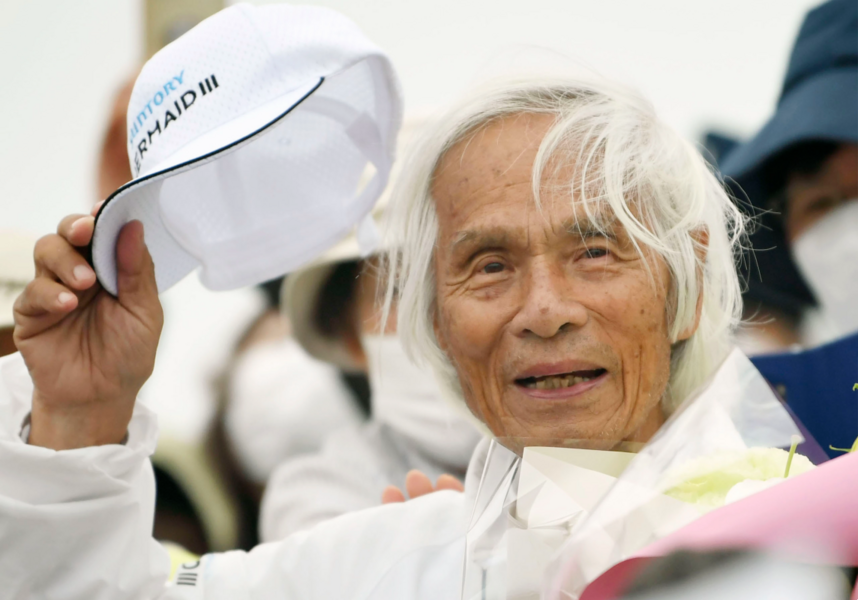Defying limits: Oldest person to sail solo across the Pacific
Loading...
| Tokyo
Japanese adventurer Kenichi Horie at 83 just became the oldest person in the world to complete a solo, nonstop voyage across the Pacific Ocean — and he says he is still “in the middle of my youth” and not done yet.
Horie returned home as he crossed the Kii Strait off Japan’s western coast early Saturday, completing his trans-Pacific solo voyage in 69 days after leaving a yacht harbor in San Francisco in late March.
On Sunday, after spending the night on his 19-foot (6-meter) -long Suntory Mermaid III just off the coast, Horie was towed into his home port of Shin Nishinomiya, where he was cheered by local residents and supporters and banners that read: “Welcome back, Mr. Kenichi Horie!”
As he approached the harbor, Horie, standing in his boat, took off his white cap and waved. He got off the yacht, took off the cap again and bowed deeply on the pier before he was presented with bouquets of roses.
“Thank you for waiting!” said Horie, who appeared tanned and with his white hair longer than usual.
He carried a stock of medicine from San Francisco, he said, but only used eye drops and Band-Aids during his more than two months alone at sea.
“That shows how healthy I am,” Horie said. “I’m still in the middle of my youth.”
He said he “burned all my body and soul” on the journey but says he's ready for more. “I will keep up my work to be a late bloomer."
At a news conference at the yacht harbor later Sunday, he said becoming the oldest person to make the feat was a dream come true. "It was my great joy to have been able to make a challenge as a real goal and safely achieve it, instead of just holding onto it as a dream.”
“I want to be a challenger as long as I live,” he said.
It 1962, he became the first person in the world to successfully complete a solo nonstop voyage across the Pacific from Japan to San Francisco. Sixty years later, he traveled the opposite route.
This time, his preparation during the coronavirus pandemic was full of uncertainties involving vaccine requirements, testing and other logistics. “It was like walking on thin ice,” he said.
Soon after his departure from San Francisco, he was faced with a storm, but the weather gradually improved and he reached Hawaii in mid-April ahead of schedule.
He had some struggles toward the end with a few days of pushback from a strong tide. He wrote on his blog on Friday that he had succeeded but was exhausted, and he took a nap after feeling assured that his yacht was on the right track to the finish line.
Horie has completed other long-distance solo voyages, including sailing around the world in 1974. His latest expedition was the first since his 2008 solo nonstop voyage on a wave-powered boat from Hawaii to the Kii Strait.
Despite sailing on his own, technology such as ship tracking and communications allowed him to stay in touch with his family and other people throughout the journey. “I imagine my next voyage would be even more fun,” he said.







